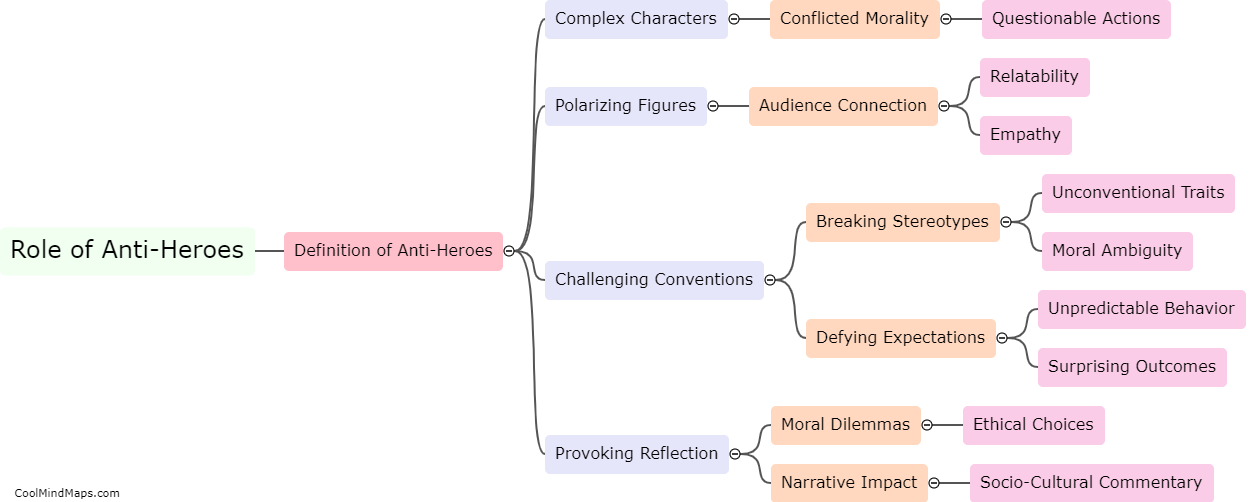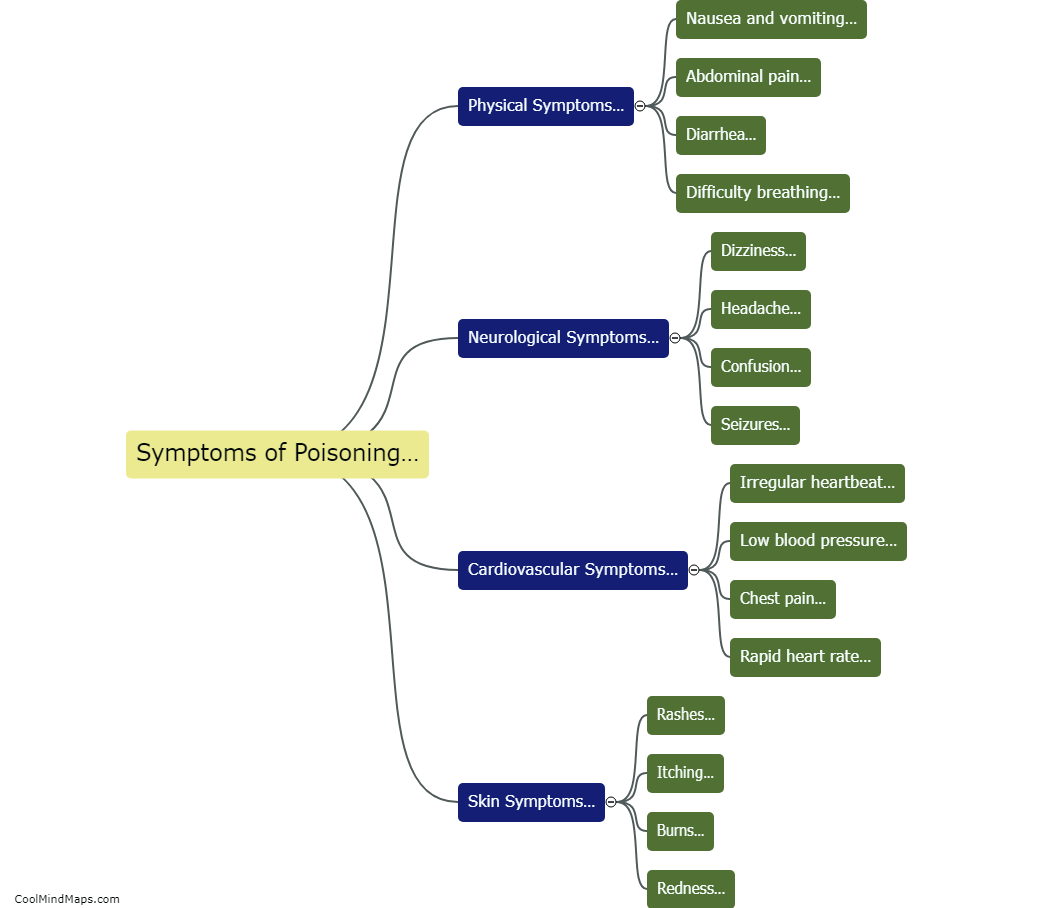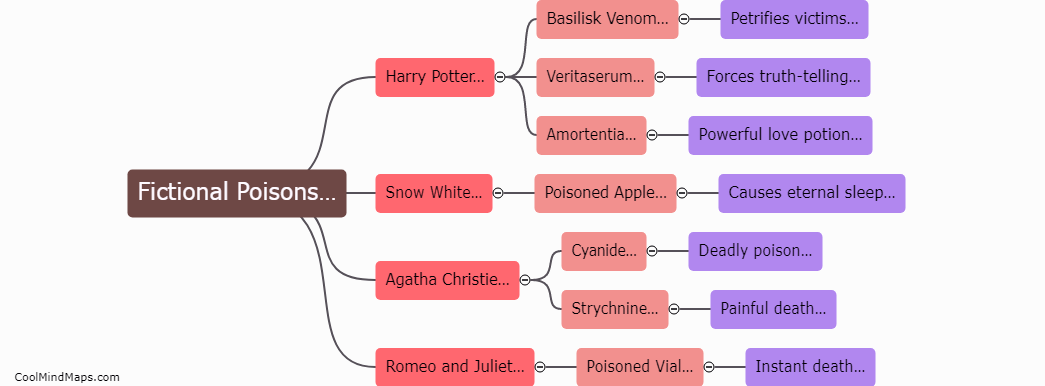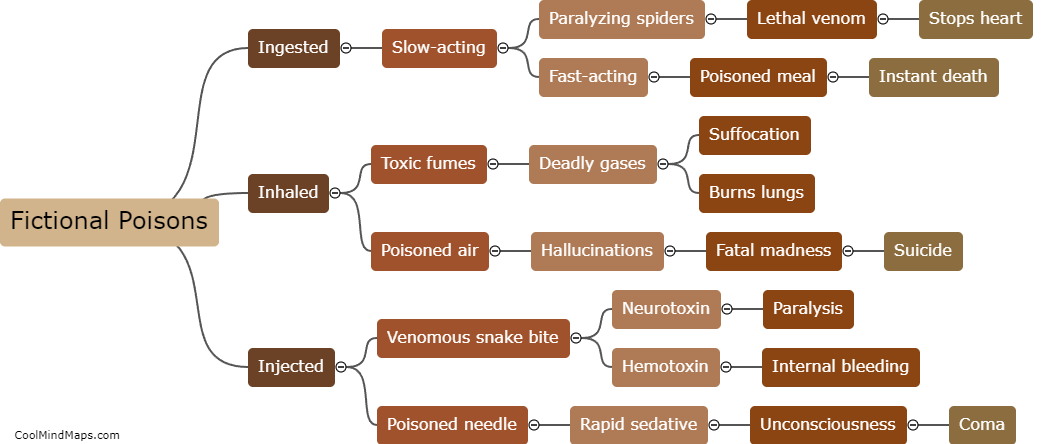Are there any real-world counterparts to fictional poisons?
In the world of fiction, poisons often serve as crucial plot devices, with their effects and characteristics crafted to enhance the drama and intrigue of a story. While many fictional poisons are purely inventions of the imagination, there are indeed real-world substances that can be seen as counterparts to these deadly concoctions. For example, cyanide, a highly toxic chemical compound, has been used in both fiction and reality to swiftly end a person's life. Similarly, ricin, an extremely potent poison derived from castor beans, has been portrayed in literature and movies for its ability to cause a painful and agonizing death. While the complexities and nuances of fictional poisons may not always have exact matches, the existence of real-world counterparts adds a chilling element to the potential dangers that substances can possess.

This mind map was published on 3 December 2023 and has been viewed 103 times.











